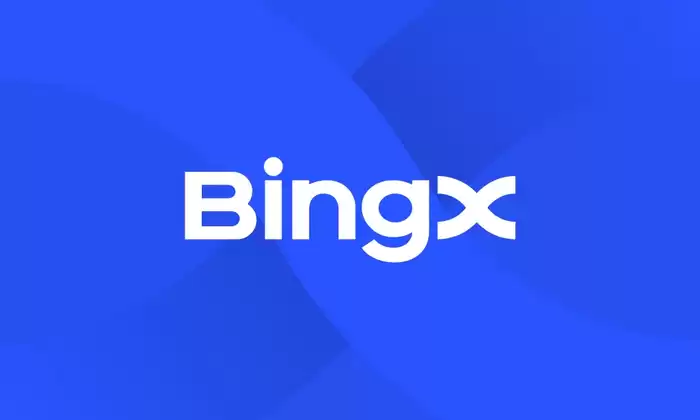-
 Bitcoin
Bitcoin $117600
0.25% -
 Ethereum
Ethereum $4424
0.10% -
 XRP
XRP $3.101
0.50% -
 Tether USDt
Tether USDt $1.001
-0.01% -
 BNB
BNB $836.2
1.26% -
 Solana
Solana $188.8
2.11% -
 USDC
USDC $1.000
0.01% -
 Dogecoin
Dogecoin $0.2301
0.57% -
 TRON
TRON $0.3485
-1.00% -
 Cardano
Cardano $0.9209
-1.34% -
 Hyperliquid
Hyperliquid $46.72
-1.19% -
 Chainlink
Chainlink $22.62
4.84% -
 Stellar
Stellar $0.4275
-0.38% -
 Sui
Sui $3.761
1.91% -
 Bitcoin Cash
Bitcoin Cash $586.7
-0.25% -
 Ethena USDe
Ethena USDe $1.001
0.01% -
 Hedera
Hedera $0.2510
2.06% -
 Avalanche
Avalanche $24.21
2.22% -
 Litecoin
Litecoin $119.7
1.07% -
 Toncoin
Toncoin $3.450
1.06% -
 UNUS SED LEO
UNUS SED LEO $9.411
-0.93% -
 Shiba Inu
Shiba Inu $0.00001298
1.20% -
 Uniswap
Uniswap $10.98
3.25% -
 Polkadot
Polkadot $3.961
2.16% -
 Dai
Dai $1.000
0.00% -
 Bitget Token
Bitget Token $4.642
0.95% -
 Cronos
Cronos $0.1514
0.57% -
 Ethena
Ethena $0.7290
3.78% -
 Monero
Monero $254.1
7.69% -
 Pepe
Pepe $0.00001102
2.47%
How to read BingX contract K-line
By understanding how to read BingX Contract K-line, traders can unveil market trends, identify trading possibilities, and make informed decisions, bolstering their technical analysis approach.
Dec 01, 2024 at 01:21 am

How to Read BingX Contract K-Line
BingX Contract K-line is a graphical representation of price data over time and serves as a vital technical analysis tool for traders. By understanding how to read BingX Contract K-line, traders can gain valuable insights into market trends, identify trading opportunities, and make informed decisions.
Step 1: Understanding the Basics of K-Line
A K-line, also known as a candlestick, consists of four key components:
- Open: The price at which an asset opens during a specific time period.
- Close: The price at which an asset closes during the same time period.
- High: The highest price reached during the time period.
- Low: The lowest price reached during the time period.
The body of the candlestick represents the price range between the open and close prices. The color of the body indicates the trend: Green (hollow) for an uptrend and Red (filled) for a downtrend.
Step 2: Interpreting Candlestick Patterns
Candlestick patterns are formed by the combination of multiple candlesticks and provide insights into market sentiment and potential trading opportunities. Here are a few common candlestick patterns to recognize:
- Bullish Patterns: Hammer, Inverted Hammer, Bullish Engulfing, Piercing Line
- Bearish Patterns: Hanging Man, Shooting Star, Bearish Engulfing, Dark Cloud Cover
Step 3: Identifying Timeframes
K-lines can be displayed in various timeframes, from one minute to one month. Each timeframe provides a different perspective on the market. Shorter timeframes offer more granularity and capture short-term price movements, while longer timeframes reflect longer-term trends and support levels.
Step 4: Combining Price Patterns and Indicators
Technical analysis combines K-line patterns with other indicators such as moving averages, Bollinger Bands, and Relative Strength Index (RSI). By corroborating the information from these indicators, traders can enhance their analysis and gain confirmation before making trading decisions.
Step 5: Applying the K-Line Strategy
Once you have mastered how to read K-lines, you can start developing trading strategies based on them. Some common K-line trading strategies include:
- Trend Following: Identifying trends and trading in their direction.
- Counter-Trend Trading: Trading against the current trend, anticipating a reversal.
- Range Trading: Identifying and trading within price ranges.
- Candlestick Patterns: Using candlestick patterns to identify potential trading opportunities.
Step 6: Risk Management
While K-line analysis is a valuable tool, it's crucial to remember that it's not a guarantee of success. Market conditions can change rapidly, and even the most experienced traders face losses. Therefore, it's essential to implement prudent risk management strategies, such as:
- Stop-loss orders: Limit potential losses by automatically exiting trades at specified prices.
- Position sizing: Manage the amount of capital invested in each trade, avoiding excessive risk.
- Risk-to-reward ratio: Ensure that potential rewards outweigh potential losses.
Disclaimer:info@kdj.com
The information provided is not trading advice. kdj.com does not assume any responsibility for any investments made based on the information provided in this article. Cryptocurrencies are highly volatile and it is highly recommended that you invest with caution after thorough research!
If you believe that the content used on this website infringes your copyright, please contact us immediately (info@kdj.com) and we will delete it promptly.
- Kazakhstan's Crypto Leap: Bitcoin ETF and Central Asia's Digital Finance Future
- 2025-08-13 12:45:19
- BlockDAG Presale Blazes Past $371M: Fundraising Frenzy Fuels Crypto Sensation
- 2025-08-13 13:05:21
- Meme Coins: Chasing the 2025 Surge – Which Will Moonshot?
- 2025-08-13 10:25:23
- Bitcoin's Wild Ride: Rally, Pullback, and What's Next
- 2025-08-13 10:25:23
- Bitcoin, Bitmax, and Institutional Demand: A New Era of Crypto Investment
- 2025-08-13 10:45:12
- Solana, ROAM, and Airdrops: What's the Buzz in 2025?
- 2025-08-13 11:35:13
Related knowledge

Is it possible to adjust the leverage on an open position on KuCoin?
Aug 09,2025 at 08:21pm
Understanding Leverage in KuCoin Futures TradingLeverage in KuCoin Futures allows traders to amplify their exposure to price movements by borrowing fu...

What cryptocurrencies are supported as collateral on KuCoin Futures?
Aug 11,2025 at 04:21am
Overview of KuCoin Futures and Collateral MechanismKuCoin Futures is a derivatives trading platform that allows users to trade perpetual and delivery ...

What is the difference between realized and unrealized PNL on KuCoin?
Aug 09,2025 at 01:49am
Understanding Realized and Unrealized PNL on KuCoinWhen trading on KuCoin, especially in futures and perpetual contracts, understanding the distinctio...

What different order types are available to use on KuCoin Futures?
Aug 13,2025 at 11:35am
Understanding Order Types on KuCoin FuturesKuCoin Futures offers a comprehensive range of order types to accommodate different trading strategies and ...

How does KuCoin Futures compare against Binance Futures in terms of features?
Aug 09,2025 at 03:22am
Trading Interface and User ExperienceThe trading interface is a critical component when comparing KuCoin Futures and Binance Futures, as it directly i...

How can I manage risk when applying high leverage on KuCoin?
Aug 13,2025 at 11:35am
Understanding High Leverage and Its Implications on KuCoinHigh leverage in cryptocurrency trading allows users to control larger positions with a rela...

Is it possible to adjust the leverage on an open position on KuCoin?
Aug 09,2025 at 08:21pm
Understanding Leverage in KuCoin Futures TradingLeverage in KuCoin Futures allows traders to amplify their exposure to price movements by borrowing fu...

What cryptocurrencies are supported as collateral on KuCoin Futures?
Aug 11,2025 at 04:21am
Overview of KuCoin Futures and Collateral MechanismKuCoin Futures is a derivatives trading platform that allows users to trade perpetual and delivery ...

What is the difference between realized and unrealized PNL on KuCoin?
Aug 09,2025 at 01:49am
Understanding Realized and Unrealized PNL on KuCoinWhen trading on KuCoin, especially in futures and perpetual contracts, understanding the distinctio...

What different order types are available to use on KuCoin Futures?
Aug 13,2025 at 11:35am
Understanding Order Types on KuCoin FuturesKuCoin Futures offers a comprehensive range of order types to accommodate different trading strategies and ...

How does KuCoin Futures compare against Binance Futures in terms of features?
Aug 09,2025 at 03:22am
Trading Interface and User ExperienceThe trading interface is a critical component when comparing KuCoin Futures and Binance Futures, as it directly i...

How can I manage risk when applying high leverage on KuCoin?
Aug 13,2025 at 11:35am
Understanding High Leverage and Its Implications on KuCoinHigh leverage in cryptocurrency trading allows users to control larger positions with a rela...
See all articles

























































































